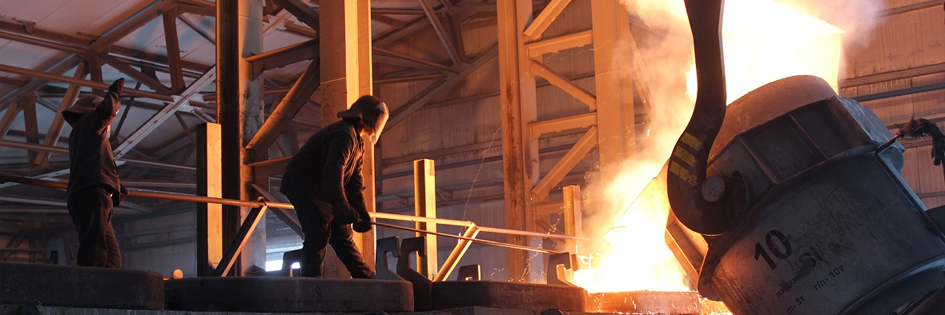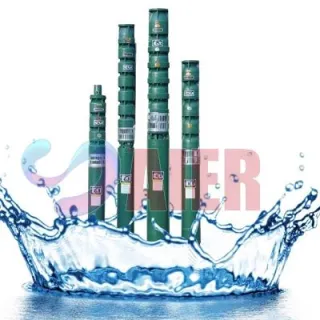Water Pump
A submersible water pump is a versatile and efficient device designed to move water or other fluids from one location to another while being fully submerged in the liquid. Unlike traditional pumps that sit above the fluid, submersible pumps operate underwater, which allows them to eliminate the need for priming and ensures smooth, continuous operation. This design not only improves efficiency but also reduces the risk of pump cavitation, making them ideal for various residential, commercial, and industrial applications.
High-quality submersible water pumps are constructed from durable materials such as stainless steel, cast iron, or high-strength thermoplastics to withstand harsh environments and prevent corrosion. They are commonly used for water drainage in flooded areas, irrigation in agriculture, water supply from wells, and even in aquaculture and fountains. Their compact design allows them to be easily installed in confined spaces, and many models feature built-in thermal protection to prevent motor overheating during extended use.
For specialized applications, high head submersible water pumps are available, providing greater lifting capacity to move water over long distances or from deep wells. These pumps are engineered to handle demanding conditions, offering reliable performance and long service life. Additionally, purchasing a wholesale submersible water pump allows businesses and contractors to benefit from cost-effective solutions without compromising quality.
Overall, submersible water pumps offer a combination of reliability, efficiency, and versatility. Whether used for household water management, construction dewatering, or industrial fluid handling, they provide a practical and durable solution for a wide range of fluid transfer needs. Their ease of installation, quiet operation, and low maintenance requirements make them a preferred choice for both professionals and end-users looking for dependable water pumping solutions.
Applications of Submersible Water Pumps in Industrial and Residential Systems
The submersible water pump plays an indispensable role across numerous industries and residential settings due to its versatility, durability, and ability to operate underwater. Whether for agriculture, construction, wastewater management, or household use, submersible pumps provide efficient liquid transfer in demanding conditions.
In agricultural irrigation, submersible pumps are widely used to lift groundwater from wells or boreholes for crop irrigation. Their ability to operate continuously and deliver consistent water pressure ensures stable irrigation systems even in remote farming areas. A reliable submersible water pump manufacturer typically designs these pumps with corrosion-resistant stainless steel casings and multi-stage impellers to handle both clean and slightly sandy water efficiently.
In the construction industry, submersible pumps are crucial for dewatering excavations, basements, and tunnels. During heavy rainfall or flood conditions, these pumps quickly remove accumulated water to maintain safe and dry work environments. Their compact, portable design and automatic float switches make them ideal for temporary or emergency drainage tasks.
The mining and industrial sectors rely heavily on submersible pumps for removing slurry, groundwater, and other fluids from pits or shafts. Heavy-duty submersible models feature abrasion-resistant materials and double mechanical seals to withstand the harsh conditions of mining operations. Their continuous-duty motors ensure reliable operation even in abrasive or corrosive environments.
In municipal wastewater treatment, submersible sewage pumps handle solids and sludge efficiently. The enclosed impeller design and high torque motors allow these pumps to move contaminated fluids without clogging, reducing maintenance downtime. Leading submersible water pump manufacturers also offer explosion-proof models for handling hazardous liquids in industrial plants.
For residential applications, submersible pumps are used in sump pits to prevent basement flooding, as well as in wells for domestic water supply. Their silent operation and compact design make them ideal for household installations.
In summary, submersible water pumps are versatile tools that serve critical roles in agriculture, construction, mining, wastewater management, and home systems. Their high efficiency, reliability, and ability to operate fully submerged make them an irreplaceable choice for any liquid-handling application.
How to Choose the Right Submersible Pump for Your Project
Selecting the right submersible pump for your project involves understanding key performance requirements such as flow rate, head pressure, water quality, and installation conditions. A well-chosen pump ensures long-term efficiency, reduced energy consumption, and minimal maintenance costs.
The first consideration is flow rate and head. Flow rate determines how much water needs to be moved per minute or hour, while head refers to the vertical distance the pump must lift the liquid. Consulting a reliable submersible water pump manufacturer can help you calculate the ideal specifications. For example, agricultural irrigation may require high flow with moderate head, while deep well applications demand pumps designed for high head pressure.
Next, evaluate the water quality. Clean water, slightly sandy water, and wastewater all require different impeller designs and materials. For abrasive or corrosive fluids, choose a submersible water pump made from stainless steel or cast iron with hardened impellers and double mechanical seals. This ensures longer service life and consistent performance even in harsh environments.
Installation environment also plays a critical role. Submersible pumps used in narrow wells or deep pits must be compact and easy to install, while those for industrial or sewage applications should include features like automatic thermal protection, non-clog impellers, and oil-filled motors for continuous operation. A trustworthy submersible water pump manufacturer typically provides customizable models to meet these specific needs.
Additionally, consider power supply and energy efficiency. Pumps are available in single-phase and three-phase configurations depending on the application. High-efficiency motors with overload protection not only save energy but also enhance operational safety.
Maintenance accessibility should not be overlooked. Look for pumps with modular designs that allow easy disassembly for inspection or part replacement. Some advanced submersible pumps come with built-in monitoring systems that detect overheating or leakage, further preventing costly breakdowns.
In conclusion, choosing the right submersible water pump requires balancing technical specifications, fluid properties, and environmental conditions. Working with a professional submersible water pump manufacturer ensures expert guidance, reliable performance data, and the best pump selection tailored to your project requirements.
How Does A Submersible Pump Work?
A submersible pump is a specialized type of pump designed to operate completely underwater, making it an essential tool for efficiently transporting liquids in wells, reservoirs, and drainage systems. Unlike surface-mounted pumps, which rely on suction to draw water upward, a submersible water pump works by pushing water to the surface using internal impellers powered by a sealed electric motor. This design allows it to achieve higher efficiency, lower noise, and reduced risk of cavitation.
Structurally, a submersible pump consists of several key components: an electric motor, a shaft, an impeller, a sealing system, and a discharge outlet. The motor is hermetically sealed and placed in a watertight housing to prevent liquid intrusion. The impeller, connected to the motor shaft, rotates at high speed to generate centrifugal force, which propels the fluid through the discharge pipe. Advanced models from leading submersible water pump manufacturers feature oil-filled motors for effective cooling and lubrication, further extending service life under continuous operation.
The working principle of a submersible water pump is based on fluid dynamics. When the motor is energized, the impeller blades spin rapidly, creating a low-pressure zone that allows water to enter the pump inlet. Centrifugal force then pushes the fluid outward and upward through the discharge port. Since the entire system operates underwater, it avoids the energy losses caused by suction height or air leakage, resulting in greater pumping efficiency.
Another important advantage of this design is self-priming capability. Because the pump is already submerged in the fluid, it doesn’t require manual priming or vacuum generation before operation. This makes submersible pumps particularly suitable for deep wells, sump pits, and flooded areas.
Modern submersible water pump manufacturers integrate additional safety and performance features, such as thermal overload protection, corrosion-resistant materials, and multi-stage impellers for high head performance. These enhancements make submersible pumps reliable solutions for both residential and industrial fluid handling applications.
In summary, a submersible pump offers a robust, efficient, and quiet way to move water or other liquids from deep or confined spaces. Its sealed construction and direct-drive design make it one of the most dependable and energy-saving pumping technologies available today.



